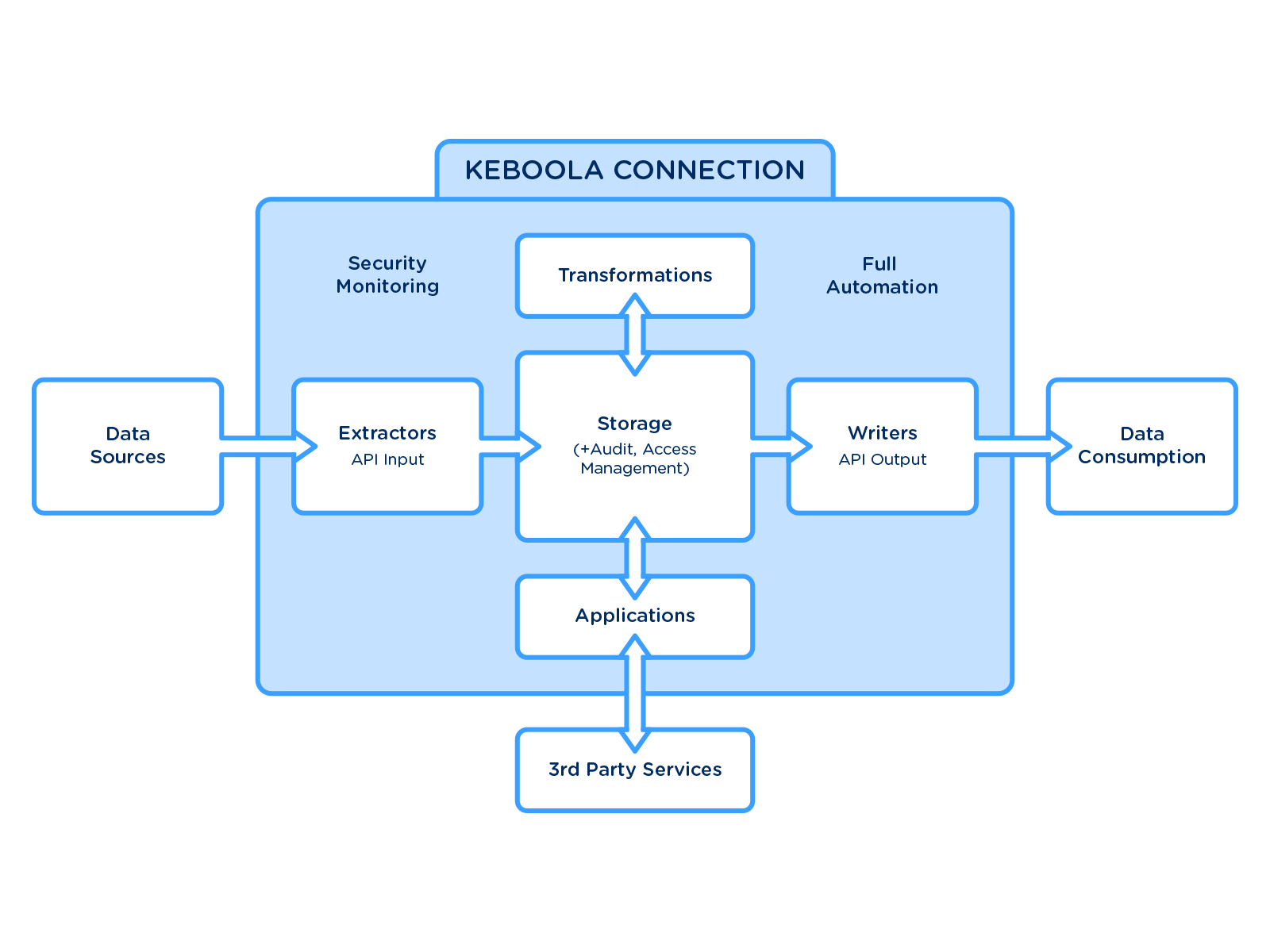Keboola Overview
- Keboola Architecture
- Working with Keboola
- Important Components
- Component Common Features
- Specific Components
- Model Context Protocol
Keboola is an open system of many components orchestrated together through (mostly REST) APIs. Although quite complex, it is modular and therefore you rarely need to work with more than a few components.
Note: Initially, the Keboola platform was referred to as Keboola Connection (KBC). While it is now simply known as Keboola, references to “Connection” or the abbreviation “KBC” might still appear in various places.
Keboola Architecture
The following chart shows how Keboola is structured. All Keboola parts are briefly described here.

Working with Keboola
Everything you can do in the Keboola UI can be done programatically using the API of the corresponding component. All of our components have API documentation on Apiary and most of them have a public Github repository. Our Docker components are built on AWS ECR.
This means that there are virtually endless possibilities of what can be done with Keboola programmatically.
Important Components
There are some components which are probably more important than others:
- Storage component which is used to store all data in your Keboola projects (data in tables, file uploads, configurations and logs)
- Docker Runner component which is used internally to run almost all components; therefore all extractors, writers and applications share its features
- Transformations component which encapsulates all types of transformations (SQL with various backends, R, Python)
- Orchestrator component which takes care of grouping different tasks together and running them regularly at scheduled times
Component Common Features
All components share some common behaviour such as Component Configuration Running Jobs, which allows each component to be run in Orchestrations. This means that once worked your way through one component, you have seen them all. Most of our components are open source. If you are interested in their code, have a look at our repositories. Apart from that common features, some components define additional synchronous actions. This (and many other information) can be retrieved using the Developer Portal API (specifically the Get app detail call which lists all components available in Keboola.
Running Jobs
What each component does is defined purely by that component, and so is the content of the configuration.
Each component has a /run API call that accepts either a reference to component configuration
(config field) or full component configuration (configData field) in JSON body, and
queues an asynchronous job.
For more details, see full API description.
Components Configuration
All components store their configuration in Storage. Management of the
configurations is done through
Storage Components Configurations API.
Stored configurations can be referenced in /run API calls.
Configuration can be defined with a JSON schema stored within the Component detail. Docker Components without their own schemas can use a generic Docker Component schema.
Specific Components
Apart from the above common API, some components offer other API calls:
Model Context Protocol
Keboola supports the Model Context Protocol (MCP), which allows AI agents and other AI assistants to interact with your Keboola projects. This enables you to leverage natural language to perform various operations within Keboola.
Our own Keboola MCP Server acts as a bridge between your Keboola project and modern AI tools. It exposes Keboola features like storage access, SQL transformations, and job triggers as callable tools for various MCP clients. Provides information about available components on stacks and can fetch documentation of any component using natural language queries using any MCP client.
To learn more about integrating with MCP, see the MCP integration guide.
